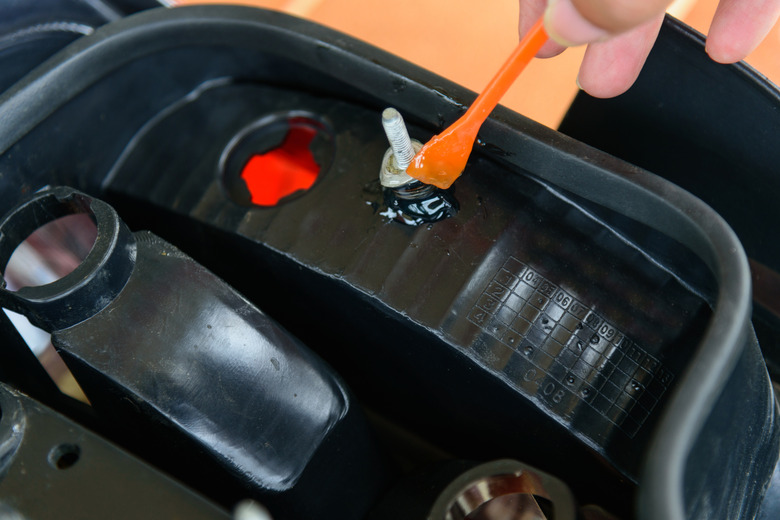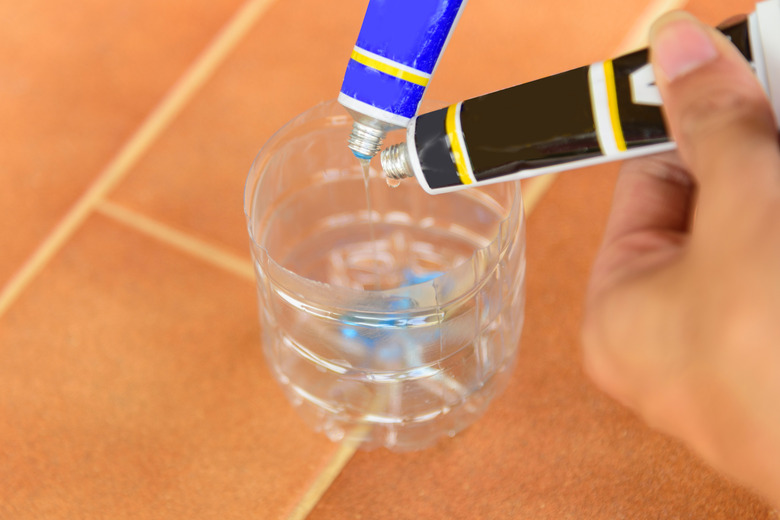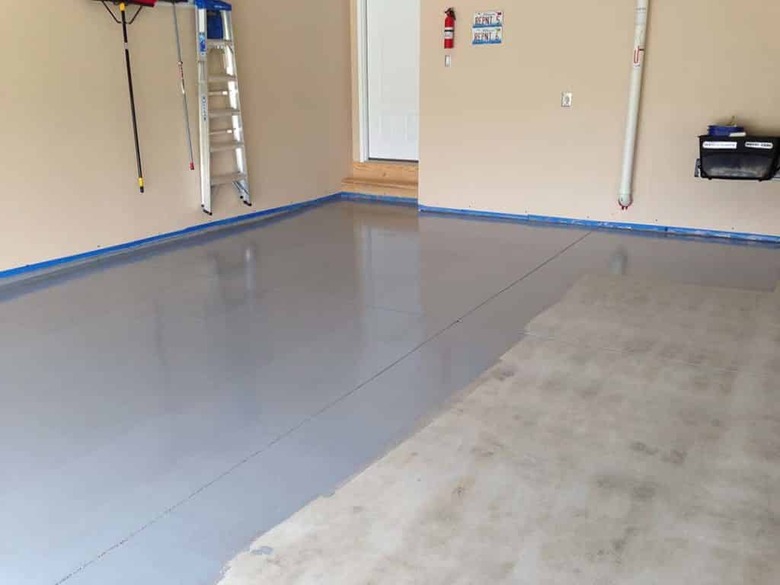What Is Epoxy?
The word epoxy has cachet, sort of like turbo. It's one of those terms that seems to have inherent "specialness." A paint that's "durable" or "weather-resistant" sounds good, but epoxy paint? That sounds truly serious. And for the most part, epoxy products have earned this reputation. Epoxy adhesive is the glue you turn to when nothing else will hold. Epoxy grout is the only standard tile grout that doesn't need to be sealed, ever. Epoxy paint is tough enough for garage floors.
The thing that gives epoxy its turbo-ness is that it cures, or hardens, through chemical reaction, rather than drying, the way most glues and paints do. The result is a hardened resin material that sticks like the dickens and is resistant to heat, chemicals, solvents, shrinkage and impact. It's also somewhat flexible, which only makes it stronger.
The Basic Chemistry of Epoxy
The Basic Chemistry of Epoxy
Epoxy products used around the home are based on epoxy resins, which are known by chemists as epoxides or polyepoxides. These are polymers (or prepolymers) that can be cross-linked with various curatives or hardening agents to create a solid material. For those of us who aren't chemists, epoxy is basically a synthetic liquid that comes in two parts—a resin and a hardener. When you mix the two together, they harden into a tough plastic with excellent adhesive properties. In addition to being used in glues, epoxy resins are blended in countless ways with various additives for specific performance characteristics. They are used in many industrial applications, from special coatings to electronics to electrical materials (epoxy is a good electrical insulator).
Because epoxy cures through chemical reaction, household epoxy products must be mixed just before they are used. There's no such thing as "pre-mixed" epoxy. Once mixed, the resin begins to set up quickly, giving you limited time to work with the material before it hardens, usually for good. This property makes epoxy products a bit trickier to handle than their air-drying counterparts. It also means you can't save any leftover mixed epoxy for future use, unless you want to use a chunk of dried epoxy for a paperweight or a doorstop.
Epoxy Adhesive
Epoxy Adhesive
The best-known and most widely used form of epoxy around the house is adhesive. And if you haven't used epoxy for gluing stuff, you should try it. Epoxy is the true "super" glue. While regular superglue (cyanoacrylate) is finicky and won't hold unless you have perfectly matched parts with virtually no gap whatsoever, epoxy can span sizeable gaps to fuse parts together, forming a tie that's often stronger than the host material(s). It also sticks to plastic, metal, wood, ceramic, concrete, brick—you name it.
Only polyurethane glue (Gorilla Glue, et al.) comes close to epoxy in terms of materials it will bond to. But polyurethane is most useful as a super-strong wood glue. Epoxy can be sanded, filed, drilled into and even tapped to hold screws. You can't do that with any other off-the-shelf glue.
Forms of Epoxy Adhesive
Forms of Epoxy Adhesive
Epoxy glue for general use comes in two basic types. "Instant" or "quick-setting" epoxy is a clear glue packaged in a convenient two-chamber syringe that dispenses the two parts of the epoxy in equal amounts so they're ready to mix. Most of these set up in about 5 minutes and reach full strength after 24 hours. Because it is clear, instant epoxy is best for general household use where appearance matters.
Epoxy "weld" or "cold weld" adhesives come in two small tubes, and you're in charge of squeezing out equal parts of the resin and hardener. Once mixed, weld-type epoxy typically has a flat, opaque color (gray, yellow, blue, etc.) and looks a bit like old chewing gum. The upside of this formula is strength and toughness. Weld-type epoxy sticks especially well and is structurally stronger and more heat-resistant than instant epoxy. It is commonly used in place of fasteners and even arc welds, thus the marketing idea of calling it "cold weld."
Other Epoxy Materials
Other Epoxy Materials
The structural and bonding properties of epoxy led to its starring role in a variety of building products; most notably, paint, tile grout and epoxy flooring.
Epoxy paints are typically sold as garage floor or outdoor/patio paints. Epoxy paints for DIYers come in kits containing a can of resin and a can of hardener as well as optional additives like color flakes or non-slip grit. Once mixed, the paint goes on pretty much like standard paint; you just have to work faster and use up all the paint before it hardens. Homeowner-grade epoxy paint has a much lower "solids" content than commercial or industrial formulas, but it's generally advertised as being tougher and better-adhering than standard outdoor flooring paints.
Epoxy grout is a tough, stain- and chemical-resistant grout made with epoxy resins and various fillers. It is commonly used in restaurant kitchens, hospitals and other commercial applications, but it is also finding its way into more and more homes, where it is favored because it doesn't require periodic sealing, as standard cement-based grouts do. Epoxy grout is also less likely to wear away over time. For these reasons, it's worth considering for small areas that get rough treatment, like shower floors.
Epoxy floorcovering is a commercial-grade liquid flooring material that creates a seamless, water-resistant surface, sort of like a synthetic version of a terrazzo floor. Epoxy flooring is typically installed over concrete floors and slabs but can also be poured over well-adhered tile. It is commonly used to renovate damaged tile or concrete floors in restaurant kitchens. It's also popular for manufacturing, medical, and storage buildings. At home, you might consider an epoxy floor (which is generally a professional job) for a finished basement, a kitchen with a concrete floor or a really fancy garage.




